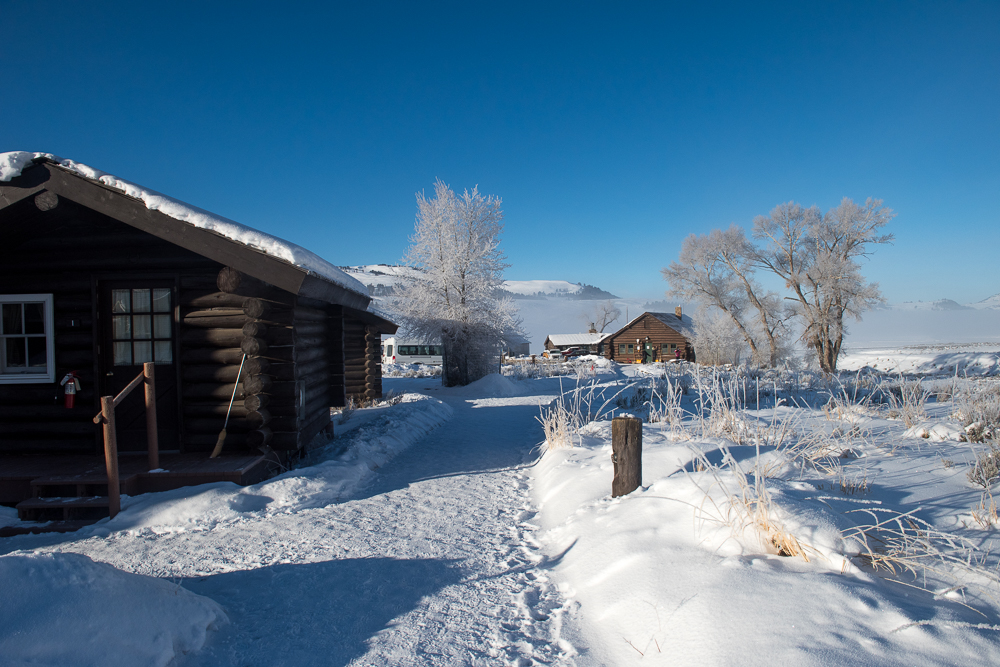My arrival to Yellowstone National Park yesterday afternoon did not disappoint. The skies were blue and welcoming as I drove through the Roosevelt Archway, en route to the Lamar Buffalo Ranch. The bison were plentiful; I must have passed hundreds of them on my short drive in. Various raptors swooped through the air in search of prey, and a handful of elk and mule deer were scattered nearby the road.
I got to the ranch and was immediately greeted by Dr. Lambert. The students wouldn’t arrive until later in the evening, so that gave me plenty time to unpack and get familiar with the area. The Lamar Buffalo Ranch (LBR), where we are staying for the majority of the course, was established in 1906 to increase the herd size of bison in Yellowstone. The extermination of bison herds throughout the West in the 1800s nearly eliminated them from Yellowstone; even after the park was established in 1872 poachers faced few deterrents. With only 25 bison counted in the park in 1901, Congress appropriated $15,000 to augment the herd by purchasing 21 bison from private owners. As part of the first effort to preserve a wild species through intensive management, these bison were fed and bred in Lamar Valley at what became known as the Buffalo Ranch. Read more about the history of the LBR here >
Today, the remodeled bunkhouse is used by Yellowstone Forever, which conducts classes and seminars like ours throughout the year. In 1993 the Yellowstone Association replaced the old tourist cabins with insulated and heated cabins for participants in its programs. But except for the phone line, the cabins and other buffalo ranch facilities are off grid.
Walking through the ranch was surreal. The Yellowstone staff had been watching wolves feed on a carcass all day, bison were roaming in the valley just below our cabins, and a pack of coyotes were yipping and howling nearby. I saw two of the coyotes bounding through deep snow near the bison, so I grabbed my binoculars to walk down and have a better look. On my way, a group of four or five people with spotting scopes was standing outside the ranch, looking the opposite direction. I quickly learned they were watching three members of the Lamar Canyon wolf pack; two black wolves, and one charcoal-colored wolf. They were breathtakingly beautiful.
One of the onlookers kindly offered his spotting scope to me so I could get a closer view of the wolves. Jort, a photographer and guide based in Gardiner, MT, told me the three had been feeding on the elk carcass, and had just chased some nearby elk up the ridge. He pulled each one into sight on the scope and explained which was which, until all three joined together and howled in unison. The sound was remarkable, and seeing them simultaneously howl brought tears to my eyes. I grabbed a quick photo through the scope and kept my fingers crossed that I would have more encounters like this.
Well…that didn’t take very long. We noticed the Lamar Canyon pack suddenly went on alert and began pacing a bit, before running off into the distance. Further down the road, we heard a new, distinct set of howling. One of the onlookers, which Jort later told me was the one and only Biological Technician for the Yellowstone Wolf Project, Rick McIntyre, drove off and confirmed via radio that the Junction Butte Pack was on the prowl and thought to be pursuing the Lamar trio. They asked if I’d like to join, so naturally I said yes(!), and we drove a couple minutes down the road to where the Junction Butte wolves were spotted. It was getting dark, but we were fairly certain we observed five black wolves, and two gray wolves. They were quickly moving through the hills, undoubtedly in the direction of the Lamar Canyon trio. Jort explained that most wolf mortalities within the park happen through conflicts with opposing wolf packs, but between the frigid temperature and lack of light, we weren’t able to follow along any further.
Not long after I returned to the LBR, our 18 students arrived from Boulder. Joanna, our other teaching assistant Drew Zackary, and some of the Yellowstone Forever team had driven out to meet them near the YNP entrance in Gardiner. We quickly showed them which cabins they would call home for the next week, and met for dinner. After some quick introductions and an overview of the ranch, we called it a night to prepare for our first day of lectures and field work.




